Motorola Xoom Review: The First Honeycomb Tablet Arrives
by Anand Lal Shimpi on February 23, 2011 11:57 PM ESTMultitasking on Android: Done Right
Android has had multitasking since the start. Fire up an app and it can continue to execute even after you’ve shifted focus to another app (or the home screen) until you run out of memory. Once you reach a certain threshold of memory usage Android will automatically unload the least recently used app from memory.

The iOS 4 Task Switcher
What Android hasn’t had since the start is a good way of switching between apps. On iOS you double tap the home button to bring up a list of apps in memory, which you can use as a task switcher. Windows Phone 7 currently relies on a very powerful back button to switch between recently used apps, and eventually will implement a webOS-like card system. Android however did it the simplest way possible: tap home and run what you want to run next (Update: as well as tap and hold on home to bring up a list of recently used apps).
Honeycomb builds upon this. The third fixed button on the lower left brings up a list of up to five of your previously run apps/tasks (tap n hold home is gone). Each item has a text label telling you what it is as well as a visual preview.
For the most part it’s actual apps that will appear in this list (e.g. Twitter, Browser, Talk, etc...) however settings pages can appear here as well.
Unfortunately the task list is limited to five items - you can’t scroll to reveal more. I feel like this is a pretty big limitation as I do find myself going back to the Apps launcher screen more than I’d like given the functionality here. There’s also no way to force quit apps from this list, which would’ve been another nice addition.
New Notifications & Widgets
Honeycomb offers you more options to switch between apps than just heading back to the home screen. There’s the new multitasking UI, but there’s also the new notification area. Instead of having to pull down a shade to reveal notifications they simply pop up in the lower right corner of the screen and remain as icons to the left of the clock. Tapping on any of the notification icons brings up the full notification and also lets you clear it. If you tap on the signal/battery strength indicators you’ll reveal a stacked list of all of the notifications. If you have more than 6 notifications the stack will grow a scroll bar to show more.
Tap once more, this time on the full notification, and you’ll fire up the associated app. The combination of the new notifications and the task switching UI means that switching between apps in Honeycomb is more like your desktop PC. It’s not quite perfect yet, but we’re getting there - and in my opinion it’s better than what’s currently available on the iPad.
Google seems sold on the use of widgets as a major feature of Android. Personally I feel like widgets are more of a placeholder until we get full blown application windows that we can toss around our tablet desktop. If you subscribe to that thought process then what Google has done with widgets in Honeycomb will make a lot of sense. In Gingerbread and prior version of Android, widgets were fairly constrained and two dimensional. You could display information within the widget but there was no depth and no concept of scrolling.
Take a look at the email widget from Honeycomb:
It’s basically a mini inbox viewer. You can scroll to view emails in your inbox or even tap the top of the widget to switch between viewing all emails and just those you haven’t read. You can’t read messages, delete or reply from within this widget, but tapping any email will open up the email app itself. As I said earlier, we’re just one step away from widgets becoming full blown apps that simply expand in place when we need them.
Honeycomb also provides some functionally decorative widgets, such as the picture frame which simply shows you a portion of one of your images. Tapping on the picture frame widget will open up the full sized photo it’s framing.
Stacks are also supported in Honeycomb widgets. Take the YouTube widget for example:

Here you get a stack of featured YouTube videos. The Books widget is also stacked, however it shows you covers of books you've loaded onto the Xoom. Tapping anything in a stack launches the associated app.
The Honeycomb Google search widget simultaneously generates web search queries as well as searches your local apps and contacts for your search string. There’s no Google Instant integration, but the UI is clean.
Adding widgets is as easy as hitting the + icon in the upper right of the screen. The default Honeycomb UI has five home screens - you can drag widgets and app shortcuts to any of them from the widget adder UI.
All of these widgets echo the same basic message in Honeycomb: giving you access to content and data in ways other than just going to the Apps launcher.
Apps Launcher
If the multitasking UI and the new notifications don’t get you to where you need to go, there’s still the old fashioned apps launcher. Located in the upper right of the screen (talk about turning Android on its head) tap the word Apps to reveal a more familiar looking grid layout of apps.
The apps are organized into horizontal pages instead of a vertical list. Google has also added a My apps tab to show just the apps that you’ve downloaded, not the apps that come as a part of Honeycomb.
I’d love to see a quick search field here so you could just start typing to find the app you’re looking for but perhaps we’ll see that in a future version of the OS.


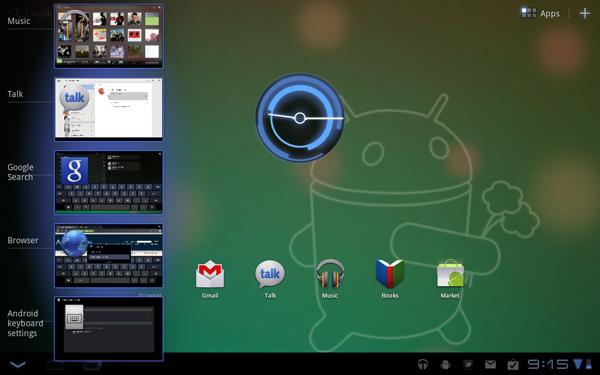
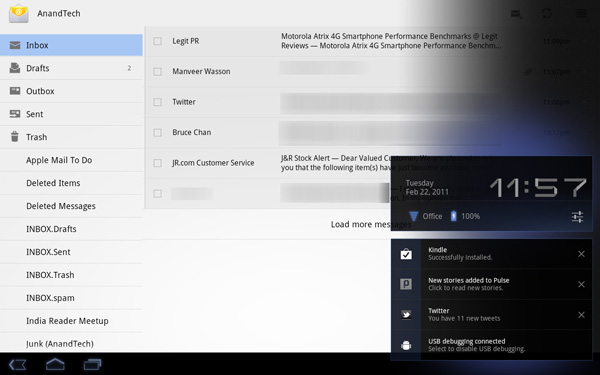
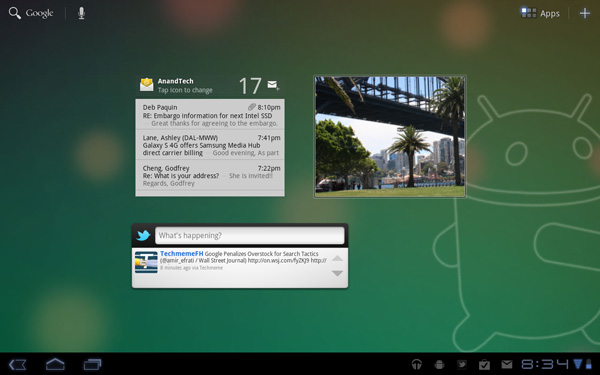
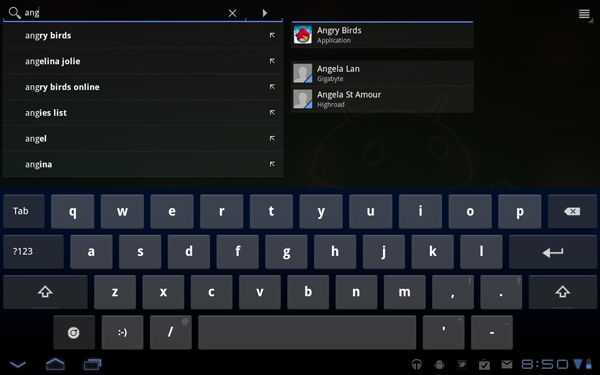
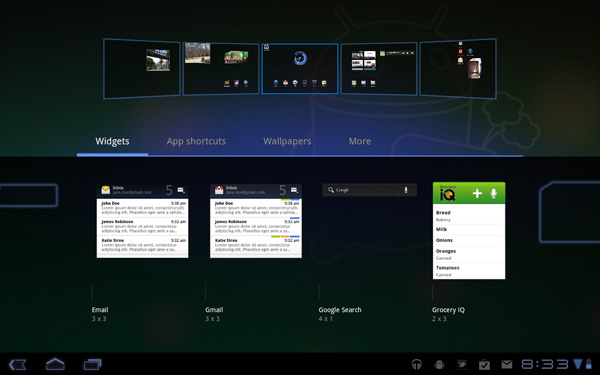
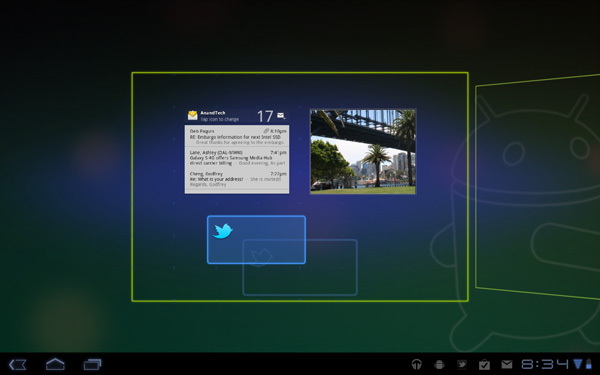
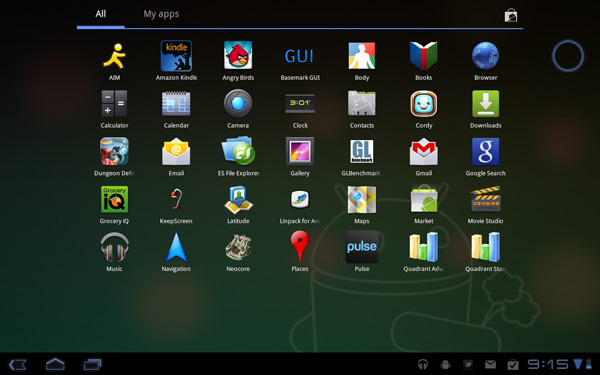
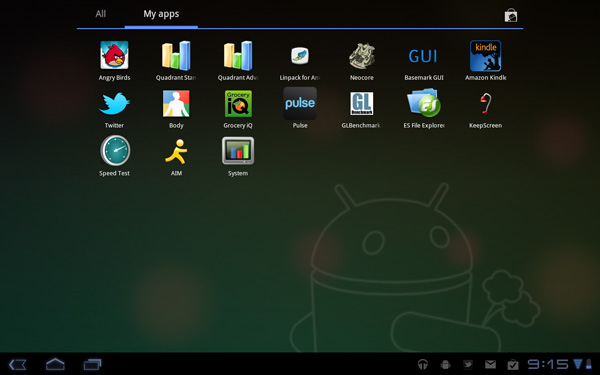








112 Comments
View All Comments
Mumrik - Thursday, February 24, 2011 - link
I'm still waiting for the whole tablet market to implode when users realize that the products makes absolutely no sense at all for 90+% of users and that they're damn expensive for what you get.tomas986 - Thursday, February 24, 2011 - link
I see quite a few people with this opinion. I'm curious to understand why they think that way...The way I figured it, there are two types of digital experience with computers/laptops/tablets/smartphones. I think they call it "media content consumption" and (I assume) "content creation". Content creation is when you have to input data (ie... writing a paper, report, writing emails, creating pics, videos, ...). Content consumption is just reading and viewing the media content.
So, you have to ask yourself, for your computer/laptop/tablet/smartphone usage, how much time do you consume content and how much time do you create content. To understand the potential for tablets, I think you really have to break it down into the two categories.
At work, I do a lot of contest creation, but at home, about 90% of the time, i am just consuming content (read email, surf web, play game,...). Also, on the road/trip/vacation, it is mostly content consumption too.
Tablets are great for content consumption and light content creation (emails, ...), which I believe most people do about 90% of the time away from work (and some people 90% at work too :) ).
So, the tablet is design to satisfy 90% of your computer-related needs away from work. Not to mention, for content consumption, it is a better user experience than computer/laptop (due to touch screen nature).
BTW, I play computer games, so definitely still need a computer. But for me, having a computer and a tablet is much better than a computer and a laptop. Note, the computer is always there, and the tablet can't replace that (for now).
Again, I think you really have to break down your digital/computer experience between consumption and creation. Then it makes more sense for tablet usage.
Impulses - Friday, February 25, 2011 - link
That's just you though... Like me you'd never give up your desktop, but the vast majority of consumers today just have one laptop, and that's it. For most a phone is basically a necessity, and smartphones have exploded because of heavy subsidies and increased functionality, but a lot of people don't need one either.Regardless, when it comes down to spending $800 on a tablet or a new laptop, they're gonna go w/the laptop (possibly a cheaper one at that)... So the tablet remains a luxury item that can't fully replace their main system, nor their secondary device (phone). If these tablets were priced way lower they'd make a lot more sense as a supplementary device, and I'm sure we'll get there eventually...
Right now most people are better served w/something like a Brazos-based ultra-portable tho. Having a tablet on top of that is great for couch use or traveling if you opt for a large laptop, but it's just a luxury item. They've tried to make newspapers and magazines the killer tablet app and I don't think it's catching on much. People that read a lot still prefer an e-reader (or an actual computer if they need to do research/etc.).
strikeback03 - Thursday, February 24, 2011 - link
Anand drives a Camry? I would have expected something more like a BMW or Audi.As far as the screen contrast goes, I find it funny that 750:1 is considered a downside here, while the notebook editors celebrate anytime they find a screen that even hits 500:1.
shadowofthesun - Thursday, February 24, 2011 - link
"I’d love to see a quick search field here so you could just start typing to find the app you’re looking for but perhaps we’ll see that in a future version of the OS."On my Android 2.1 device, typing while in the applications drawer brings up a quick search box which does indeed search apps on the phone.
I vaguely remember my previous motoblur 1.6 device actually filtering the apps if I typed on the physical keyboard, but I can't confirm that ATM.
strikeback03 - Friday, February 25, 2011 - link
plus didn't the page for the google search box show it bring up the app Angry Birds as the first result?ltcommanderdata - Thursday, February 24, 2011 - link
http://www.flickr.com/photos/26574892@N07/54752576...Interestingly, Motorola designed the Xoom's primary product page around Flash, probably to exclude the iPad, but it ironically means the Xoom can't view it yet either.
mrdeez - Friday, February 25, 2011 - link
I will definitely get one of these wifi only when released.....Great fair review. What this unit has going for it IMO,and other android device makers should pay attention to is Battery life. I love my evo but i get anywhere from 5-8 hours on it depending on what i'm doing. I really think ability to actually use these devices without having to charge the battery all the time is a big advantage. Most of the hardware/software quirks will be fixed soon as this is googles developer tablet.chomlee - Friday, February 25, 2011 - link
This is my take away from all of this, and keep in mind, I am not an apple fanboy. My favorite phone is the EVO.My most important factors in a tablet
Best screen - Apple
Best Load time - Xoom
Best UI - Xoom (considering deficencies will be fixed with future android releases)
Battery Life - Tie
Pricing - Apple
Overall, to me it is a tie right now but that is with the current IPad. The next IPad will probably catch up to the the Xoom on most of the benefits and the only benefit of the Xoom may be Honeycomb.
Another factor not mentioned that is really important to me is how you can turn on your 3G service a month at a time and use it on vacations when you need to. I would never get a contract on a tablet device because it would mostly be used at home on the wifi (I think most people are in the same boat). That option is a deal breaker for me.
I would love to have an android device but I have a feeling that the Ipad 2 is going to be even better at a lower price than the xoom, I may end up being one of those drones buying the new IPad.
bplewis24 - Tuesday, March 1, 2011 - link
You forget that there will only be one new iPad releasing this year (most likely), but there will be several Honeycomb tablets emerging on the market. Some will have better screens (Asus Transformer?), some will have better pricing (Galaxy Tab 10.1?), and yet others will have better feature sets ...all while still having the same best-in-class Honeycomb UI.So, while the iPad2 may possibly catch up or even surpass the Xoom on some level, that will be it for the rest of the year, while other Honeycomb tablets will still be shooting for the crown, driving Honeycomb tablet pricing down in the process.
Brandon